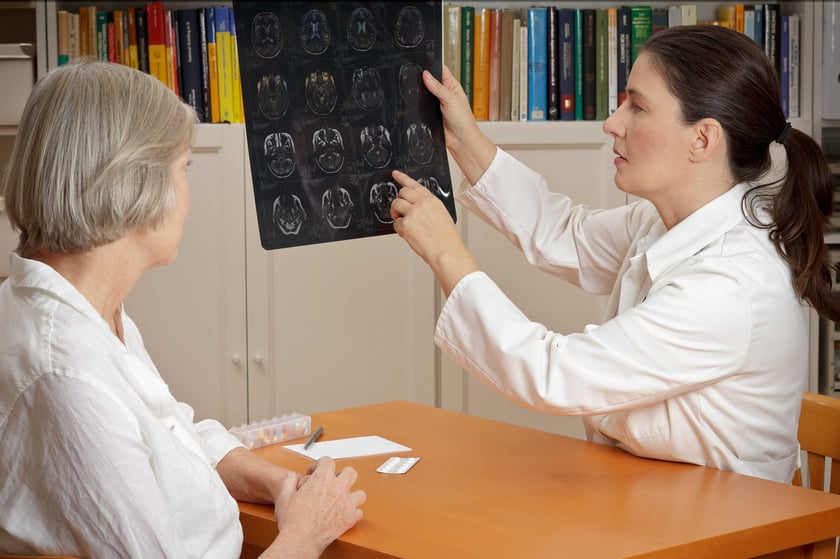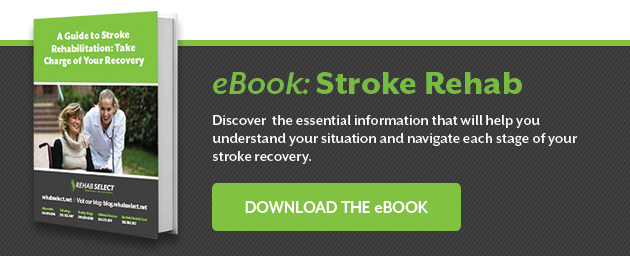
When an area of the brain experiences a sudden reduction or loss of blood flow, the affected brain cells are deprived of oxygen and, within seconds, begin to die. This process is known as a stroke. Strokes are both relatively common and extremely serious - the Mayo Clinic categorizes them as a medical emergency requiring urgent treatment.
According to the CDC, “every year, more than 795,000 people in the United States have a stroke. About 610,000 of these are first or new strokes. About 185,000 strokes—nearly 1 in 4—are in people who have had a previous stroke.” People who have experienced a stroke are likely to suffer from secondary side effects after the stroke takes place; in fact, strokes are the leading cause of long-term serious disability in North America.
Understanding the symptoms of a stroke is crucial because early detection and intervention can significantly improve outcomes. But if you’re one of the thousands of people who have already experienced a stroke, understanding what to expect is crucial for effective rehabilitation planning, improving quality of life, and implementing preventative measures. By anticipating potential challenges, individuals can proactively manage risk factors and make necessary lifestyle adjustments.
Let’s examine how to know if you’re having a stroke and what secondary side effects you may experience afterward.
Stroke Symptoms
Knowing the symptoms of a stroke can save lives. If you experience any of the following symptoms, you may be suffering from a stroke.
- Balance issues or mobility impairment
You might not be able to walk when you are having a stroke. Sudden dizziness, stumbling, and loss of balance may all be symptoms. - Numbness and/or paralysis
Paralysis or numbness is common with strokes, usually in the limbs or face. It often only affects one side of the body - for instance, you may only be able to raise one arm, or you may notice one side of your mouth is drooping down. - Severe headache
Some people have a serious headache during a stroke, sometimes accompanied by vomiting, altered consciousness, or dizziness. - Speech impairment
People experiencing strokes may slur or stumble over words, confuse words, or have difficulty understanding other people when they speak. - Vision impairment
You may not be able to see clearly when you’re having a stroke. You might experience blurred or double vision or see black spots in front of your eyes.
Some, or all of these symptoms, may indicate that you’re having a stroke. If you are concerned that you or someone else is having a stroke, a good way to remember what to watch out for is the acronym FAST.
- Check the Face for drooping muscles
- Raise both Arms to check for paralysis
- Try to Speak and watch out for any slurring or word confusion
- Finally, check the Time and call 911 immediately
Long Term Side Effects of a Stroke
Every stroke is different, so every patient will experience different long term side effects of stroke.
Awareness of long-term consequences helps in building support systems, both within the healthcare community and through support networks, to address ongoing needs and provide necessary assistance. Prioritizing mental health and seeking appropriate support for emotional and psychological challenges associated with stroke recovery are also facilitated by knowledge of the long-term effects.
Stroke side effects can be broken down into three groups - physical, cognitive, and emotional.
Physical Side Effects of a Stroke
The most common physical side effects of a stroke include:
- Dysphagia - Many patients experience difficulty swallowing, or dysphagia, after a stroke. It usually diminishes over time.
- Fatigue - Most patients will feel frequently tired, or tire easily, after a stroke.
- Muscle impairment - Muscle weakness is common after a stroke. This may be displayed as hemiparesis (weakness on one side of the body), incontinence (the inability to control the bladder and/or bowel movements), foot drop (dragging your toes when walking, in one or both feet), or paralysis (the inability to move muscles or muscle groups).
- Pain - Pain is very common in stroke patients. It may present as joint pain, or other pains caused by miscommunication between the brain and the nervous system.
- Seizures and epilepsy - The brain damage caused by a stroke can trigger seizures and/or epilepsy as a side effect. Around 5% of stroke patients will have a seizure in the weeks after a stroke. Of those, some may develop chronic seizures and be diagnosed with epilepsy.
- Spasticity - Spasticity refers to painful or uncontrollable muscle movements and spasms that can result from a stroke.
- Vision impairment - Up to two-thirds of stroke patients will experience problems with their vision as a side effects of stroke. Issues include partial blindness, tunnel vision, double vision, and blind spots.
Cognitive Side Effects After a Stroke
As well as physical side effects, many of those who have suffered a stroke also experience some form of cognitive impairment. According to the National Stroke Association, common issues include:
- Aphasia - Problems with language use are very common side effects after a stroke. Examples of aphasia include difficulty speaking, word confusion, trouble understanding others’ speech, and issues with reading and/or writing.
- Memory loss - Damage to brain cells during a stroke can frequently cause memory loss. Patients may struggle to remember words, names, faces, routes, recent events or new information.
- Sensory issues - Post-stroke patients may confuse sensations like hot and cold, or experience tingling like pins and needles.
- Vascular dementia - Patients suffering from vascular dementia after a stroke may have difficulty making decisions, planning, and reasoning.
Psychological Side Effects When Recovering from a Stroke
Strokes are not only challenging physically - not surprisingly, they can take a serious toll at an emotional level, too. Many patients who have gone through a stroke experience issues like:
- Post-stroke depression - Strokes can cause a major depressive episode. Signs of post-stroke depression include feelings of sadness, hopelessness or helplessness, alterations to appetite and sleep, and irritability. Depression affects more than 1 out of 3 stroke sufferers.
- Pseudobulbar affect (PBA) - This is one of the most common stroke side effects. According to research, PBA is a behavioral syndrome reported to be displayed in 28–52% of stroke patients with first or multiple strokes, and incidence may be higher in patients who have had prior stroke events and higher in females. PBA is described as “emotional incontinence” - uncontrollable bursts of emotion, including hysterical laughter or tears, which may take place in inappropriate social contexts. PBA may be misdiagnosed as depression.
Managing After-Stroke Symptoms: Find Stroke Rehab in Alabama
Strokes require emergency medical treatment to minimize the damage caused to the brain and body. After emergency treatment, your medical team will work to treat the stroke side effects. Most stroke patients will need to complete a rehabilitation program, which may begin before leaving the hospital.
After you are discharged, you may be referred for inpatient treatment, outpatient rehab, or treatment in your own home. The treatment you receive will depend on the long term side effects of a stroke that you are experiencing, but your rehab program may include speech therapy, occupational therapy, physical therapy, psychotherapy, and vocational rehabilitation. Stroke rehab programs usually focus on restoring your quality of life by improving areas such as physical mobility, communication skills, and psychological functioning.
At Rehab Select, we offer a specialized stroke rehabilitation program in Alabama, which has helped hundreds of patients enjoy an improved quality of life. Our stroke rehabilitation programs comprehensively address the physical, cognitive, and emotional effects of strokes, ensuring holistic care. We are dedicated to ensuring your rehabilitation journey is as comfortable and effective as possible, guiding you toward a complete recovery and a return to a fulfilling life post-therapy
If you’d like to know more about our personalized, integrated programs at one of our five locations in Alabama, we’d love to get in touch with you or provide a tour of our facility.





